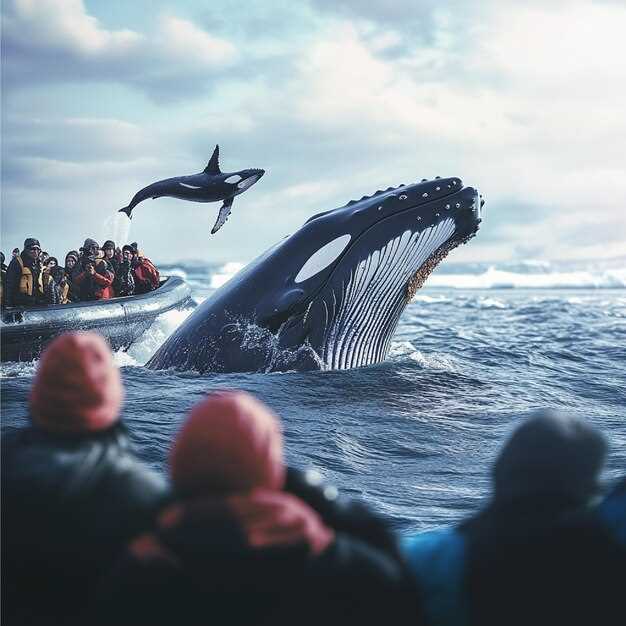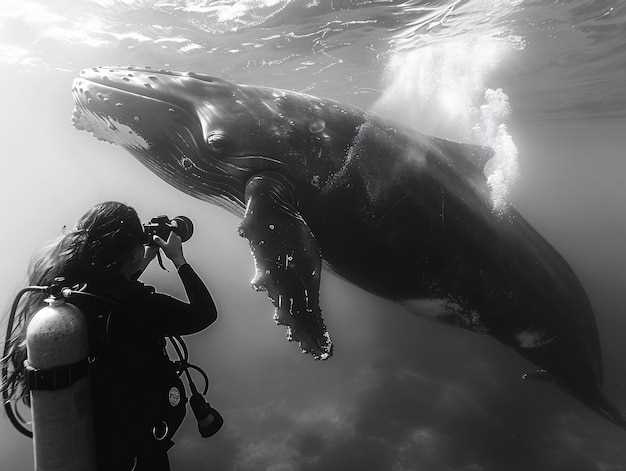
Book a guided, small-boat whale-watching trip in the calm hours of summer for the best odds of getting a closer view. A seasoned operator coordinates routes by wind, feed, and wildlife patterns, delivering a convenient start to your day and a sheltered platform for the encounter.
Most sightings occur in feeding lanes where whales surface to breathe, so book a tour that runs during these windows. A typical trip lasts two to four hours, with pauses for photos and narration from a trained naturalist, and, if you like, notes in writing. This approach combines practical timing with responsible viewing, so you gain value from the experience while minimizing disturbance.
To maximize your lifetime memory, choose operators that offer shared experiences with others or opt for a private option if you prefer a more intimate contact and a closer touch with the guide’s expertise.
Before you depart, confirm details from the town you’ll depart and share a preferred contact, such as email, so updates about weather, whale activity, and alternative plans reach you quickly. A clear purpose helps you coordinate with a guided crew and a local naturalist to tailor the day to your expectations, adding convenience to the experience.
Choose destinations with protected coastlines where forest meets the sea, and seek sheltered viewpoints that provide a magical setting while keeping sightings respectful. For summer itineraries, prefer operators that limit crowd sizes and emphasize safety, so you stay comfortable while maximizing your lifetime experience. With careful planning, most travelers leave with a strong story about what they saw and how they felt.
What to bring: light layers, sunscreen, a compact camera, and a flexible schedule. If you want more detail, contact the operator by email and ask what sightings were most common last season, whether they offer closer-on-water viewpoints, and how they manage safety in sheltered conditions. This approach adds convenience to your plan and helps turn a day at sea into a lasting memory shared with others.
Akureyri Whales Food Walk: Practical Insights for Encountering Giants
Book the Akureyri Whales Food Walk as a small-group option to maximize your chances of seeing giants.
The following tips give you practical insights for encounters along Skjálfandaflói and the harbor, blending tasty stops with moments of close whale presence. Arrive at the center a few minutes early to meet your guide, receive route details, and set expectations for photography and pacing.
-
Timing, group size, and route: The best odds come from a small group (typically 6–8 people). The guide uses real-time sightings data and weather updates to choose paths that keep you near calm water and predictable whale activity. The route centers on sheltered sections near the bay, with occasional detours to viewing decks for keeping you in-frame with the giants.
-
What you’ll experience: Each stop alternates between a bite-sized tasting from local vendors and watchful pauses where you watch the water for blows and tail flukes. The beauty of Iceland’s coastline combines with the thrill of a sighting, creating lifetime moments you can share in your feed or in person–media captured becomes memories you can revisit long after the trip.
-
What to bring and wear: Dress in layers, bring a windproof jacket, hat, and sunscreen. A compact telephoto lens helps with distant spouts; a small, secure bag keeps your essentials handy without slowing the group. Comfortable walking shoes are a must for the center segment and any dockside tastings.
-
Payment, booking, and flexibility: Payment is typically completed online during booking, with the option to pay by card on arrival in some cases. If you’re coordinating a group o party, ask about private slots or split-tours–these options suit families, photographers, and corporate outings.
-
How to plan around the ride: The walk lasts about 2.5 hours, with 2–3 tasting stations and on-water segments. The following moments depend on whale activity, weather, and boat traffic; your guide will adjust to maximize sightings while keeping you comfortable.
-
Practical references and insights: Check Google reviews and the local tourism center for the latest experiences and tips. Media accessed from previous experiences can help set expectations, including best photo angles and child-friendly spots near Skjálfandaflói.
-
Contact and accessibility: If you have those with mobility needs or you’re organizing a larger party, contact the center in advance. They can tailor the route, adjust pacing, and coordinate with local vendors to ensure smooth entry and exit for those joining from iceland towns or across the bay.
Best seasons and times to see whales near Akureyri
Book a morning speedboat trip from Akureyri harbor between May and September for the most reliable whale sightings. Unless seas run rough, those departures benefit from calm conditions, long daylight, and lines of feeding whales along the fjord.
Arctic waters around Eyjafjörður host several species; in most years, minke whales are the staple, with humpbacks appearing more often from mid‑summer. Orcas arrive occasionally, providing dramatic moments. Received reports from travelers highlight close views and memorable tail slaps that stay with you long after the trip ends.
Best times of day are early morning and late afternoon, when light is favorable and creatures surface more visibly. The speedboat format offers a dynamic perspective, while safety gear and trained skippers keep experiences comfortable and safe.
Flexibility helps; if a planned ride is postponed, many operators provide alternative slots on the same day. During peak months, popular tours fill quickly, and deals with flexible payments are common in shoulder periods. This setup supports lifelong memories and wonderful moments on the water.
Islands along Eyjafjörður add scenery and variety; you may taste sea spray as you watch whales travel along feeding lines. For travelers arriving from overseas, these short journeys deliver a focused taste of Icelandic coast life and outstanding wildlife interactions.
If you want to maximize your chances, plan for a multi‑hour option on clear days and consider a second ride to compare light and angles. The arctic backdrop, combined with calm mornings, delivers incredible views and offers a tangible sense of the wild world just off shore.
Table: seasonal snapshot
| Season | Peak months | Likely whales | Best conditions | Typical duration | Notes |
|---|---|---|---|---|---|
| Late spring to early summer | May–June | Minke, humpback calves | Calm seas, light winds | 2–3 hours | Islands nearby; strong viewing potential; received positive feedback |
| Mid-summer | July–August | Humpback, minke, occasional orcas | Long daylight, clear water | 2–4 hours | Classic, popular option; early booking advisable |
| Early autumn | September | Minke, humpback | Still productive; seas can rise | 2–3 hours | Weather variable; deals often available |
How to choose a responsible tour operator in Iceland

Pick a small, certified operator that offers guided whale watching with a highly transparent safety record and a published sustainability policy.
- Credentials and policies: Verify licenses, insurance, and official certifications; review a sustainability policy published on the operator’s site; ask for the источник of conservation claims.
- Wildlife ethics and rules: Confirm a strict distance rule (at least 100 meters from whales and dolphins), no feeding, no chasing, and a policy to avoid disturbing puffins and other birds.
- Boat capacity and guided approach: Prefer guided tours on smaller boats (8–12 passengers) and check how the crew minimizes noise and wake; given the remote nature of the seas, ask about communication and safety gear.
- Itinerary preview and data: Request a preview of the day’s route and a data-backed sightings summary from the last season; look for a statistical breakdown of where you’re likely to go and what you’re likely to see.
- What’s included and payment terms: Check inclusions like drinks and snacks (drinks, chocolate), warm gear, life jackets, and a clear payment and cancellation policy; ensure there is a rain-check option if weather cancels the trip.
- Local impact and downtown access: Favor operators that partner with local guides in downtown Reykjavik or Húsavík and maintain a transparent collection of local suppliers and sustainable practices.
- Puffins and seabird safari options: If puffins are on your list, choose a seabird safari that blends with whale watching and protects nesting sites; confirm seasonal timing (April–August) and shore visits for a touch of land-based experience.
- Booking tips and purpose: Compare at least three operators on the same criteria, then book with a company that aligns with your purpose: protecting nature while enjoying the experience; this approach keeps your trip responsible.
These things matter. When you plan, soak in the scenery, keep expectations realistic, and choose operators that are adding value through local knowledge, a charming touch from guides, and a responsible approach to the environment.
источник
Gear, safety, and packing for boat-based viewing
Pack a compact, waterproof bag with a lightweight rain jacket, sunscreen, polarized sunglasses, a wide-brim hat, a small bottle of water, and motion-friendly snacks. Given unpredictable sea conditions, this setup can make you ready for long hours on open decks and sudden wildlife opportunities, year after year.
Wear a fitted life jacket while on board, and store it near the center of the vessel for quick access; choose non-slip footwear and secure loose gear to prevent shifting on open decks, boats, and during climbs to lookout points, a design allowing smooth movement.
Before departure, check official websites for requirements and legislation; review cancellation policies, and consider deals with flexible terms. Choose the best option for your schedule and plan. Those resources from the center and from a museum or conservation program often include guidance, and the language may vary by year.
Bring a good camera with a high-capacity memory card to capture distant spouts without disturbing the animals; set the settings to a fast shutter and continuous focus to catch those mystical, sudden breaches in a classic moment.
Carry a compact first-aid kit, personal meds, and a small snack kit featuring local cuisine; most boats provide a rest area and shade, but pack extra layers for year-round trips, and check if the facility has clean drinking water or a sheltered place to sit when the weather shifts.
Leave contact details with a companion and keep this packing plan handy; save this content in your notes for quick reference, and share the plan with crew to ensure everyone stays comfortable and safe on boats.
Wildlife etiquette and respectful viewing tips

Keep at least 100 meters from their groups and reduce speed; switch off noisy equipment and approach with a calm, steady course to minimize disturbance and protect their behavior.
What you observe matters: different species react to boats in distinct ways, so follow the guide’s directions. Each member of the crew reads the animals’ signals, and the guide adjusts distance accordingly, pursuant to local rules.
Before trips, check the источник guidelines published by the operator and review details of cancellation and payment policies to avoid surprises; this builds flexibility for weather changes and route tweaks.
When watching, blend your presence with their rhythm: keep voices low, avoid shouting, and limit uses of loud devices. Follow the guide’s instructions to stay in the safe zone and maintain a steady pace that respects their behavior.
On hauganes trips to the fjord, stay on deck in the approved zones, watch for feeding areas, and respect water margins; patience and careful observation yield exhilarating moments and reveal the beauty of the coastline without pressing their routine.
Capture selectively: image captures and brief previews are permitted only when allowed; avoid flashes and minimize the duration of each shot to protect their focus and energy.
Carry minimal gear, dress for changeable weather, and stay flexible so you can adapt to wind, currents, or wildlife activity; this flexibility boosts safety and enjoyment on trips.
After the voyage, provide constructive feedback about the operator’s service and the viewing protocol; your text notes on what worked, what could improve, and how the payment and cancellation process felt help improve future sailings and guide practice.
Respect cuisine and local culture: support ethical seafood sources, observe shoreline customs, and acknowledge the community that surrounds the fjords; your mindful behavior preserves beauty for generations to come.
What to expect from the Akureyri Whales Food Walk experience
Book the Akureyri Whales Food Walk for a guided, town-centered outing that combines taste with harbor views. The purpose is clear: a number of bites, stories from local hosts, and a relaxed pace that welcomes you as a group. akureyri serves as your base, and this walk puts you in touch with the town beyond the usual sights.
The route covers a sequence of points along the waterfront and central streets, delivering a collection of bites and drinks to sample. A friendly guide explains ingredients and origins, and you soak up the atmosphere between stops. The experience is guided, the details are provided, and each stop adds a good story to your day.
Dates vary by season, and trips are kept small for a good experience. The cancellation policy is straightforward and clearly stated, with options that fit different plans. Booking links below offer secure access and simple changes if needed.
What’s included and how it works: a taste of local specialties, tastings, small plates, beverages, and a welcome introduction are provided by local kitchens. The walk is covered by a single guided crew, and you’ll stay in a manageable group size. You can reserve via the computer-friendly checkout, either on your computer or mobile device.
Optional add-ons include a short trip to Hauganes after the walk for whale-viewing vibes. Akureyri serves as your base and the experience combines culture, cuisine, and nature in a stunning and spectacular sequence, with a number of stops that showcase local specialties. Links below show available dates and booking options.
Seen by many travelers as a good introduction to the area, the Akureyri Whales Food Walk provides a friendly welcome and a starting point for further adventures in the town, Hauganes, and the surrounding fjords. Below, you’ll find the steps to book and the cancellation terms.
